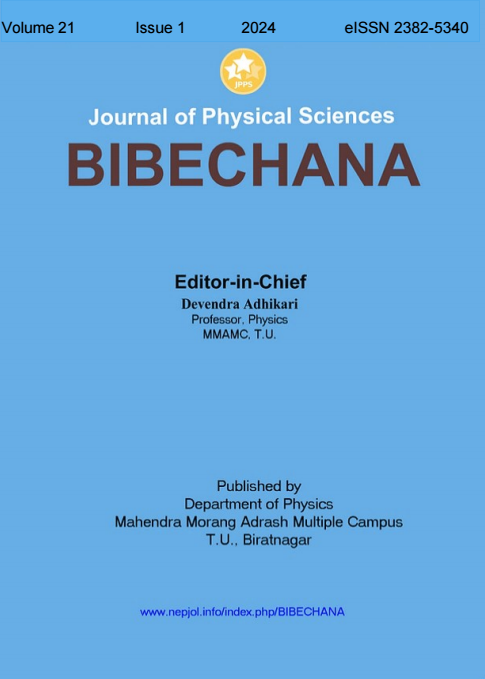Lattice thermal conductivity in half-Heusler compounds XNiSn (X=Ti, Zr, Hf) using Slack's model
DOI:
https://doi.org/10.3126/bibechana.v21i1.58405Keywords:
Density functional theory, Lattice thermal conductivity, Slack’s model, Phonon bandsAbstract
Reducing lattice thermal conductivity (κl) that reflects the material’s heat-carrying capacity through lattice phonon vibrations is crucial for optimizing the figure of merit (zT). Using density functional theory (DFT) and density functional perturbation theory (DFPT), present work considers the structural, electronic, magnetic, and phonon properties of the XNiSn (X=Ti, Zr, Hf ) half Heusler (hH) compounds. TiNiSn, ZrNiSn, and HfNiSn are identified as semiconductors with indirect band gaps of 0.43 eV, 0.47 eV and 0.39 eV, respectively, exhibiting dynamical stability. The temperature- dependent κl of hH XNiSn are compared using Slack’s model with two approaches for analyzing phonon velocity: elastic constants from quasi- harmonic approximation (QHA) as implemented in the Thermo_pw code and slope of phonon bands based on DFPT. At room temperature, TiNiSn, ZrNiSn and HfNiSn have κl values of 28.61 Wm−1K−1, 34.61 Wm−1K−1 and 29.85 Wm−1K−1 respectively using phonon velocity from slopes of phonon bands based on DFPT. These values show deviation of 1.48%, 6.29%, and 5.82% to those κl values 29.01 Wm−1K−1’, 36.79 Wm−1K−1 and 31.59 Wm−1K−1 for TiNiSn, ZrNiSn and HfNiSn respectively using QHA.
Downloads
Downloads
Published
How to Cite
Issue
Section
License
Copyright (c) 2024 The Author(s)

This work is licensed under a Creative Commons Attribution-NonCommercial 4.0 International License.
This license enables reusers to distribute, remix, adapt, and build upon the material in any medium or format for noncommercial purposes only, and only so long as attribution is given to the creator.




